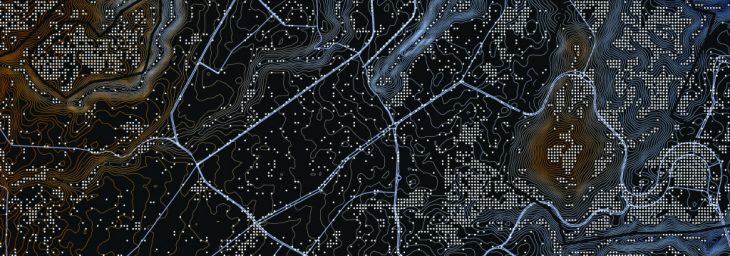La Republica Alimentaria is an ongoing project exploring the potential intersections of agriculture and the city, urban farming, polyculture farming, biodiversity and precision agriculture.
Guatemala is facing a crisis of food production. Why is food production pushed outside the city when it has the potential to positively impact neighborhoods by bringing fresh food closer to home and to the table? With increasingly little land and fewer natural resources for farmers to carry out subsistence farming, we are proposing to leverage the resources of Guatemala City to re-inject life back into Guatemala’s agriculture and inversely inject agriculture and biodiversity back into the city.
How can we create an urbanism that promotes the growth of food? We set out to understand the conditions to grow the staple food crops of Guatemala. Understanding the flows of nutrients and environmental conditions for each variety of crop will allow us to create a specific, high-defintion, granular proposal.
THE METHODOLOGY
In search for an algorithm that promotes the growth of food in the city, we analysed the existing conditions over a specific zone of Guatemala City on a scale of 10km x 10km:
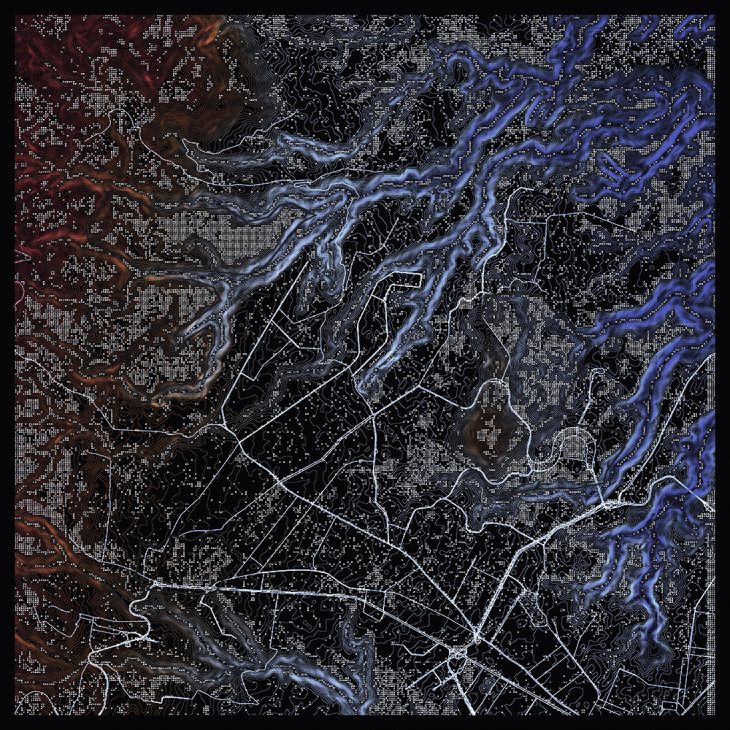
We studied the relationships of the built fabric to natural topography of the site to understand the extent to which the city has grown and the proximity to the natural ravines of the site.
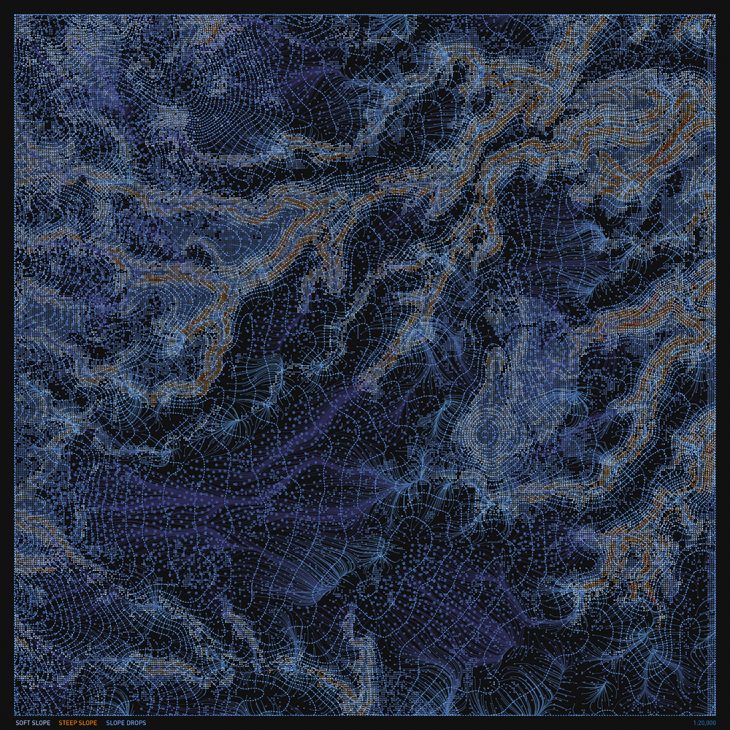
Agriculture is linked primarily to the availability of empty land. The map above is a combination of topographic lines overlayed with a dot matrix of available land colored from hot to cold to show the strength of the slope.
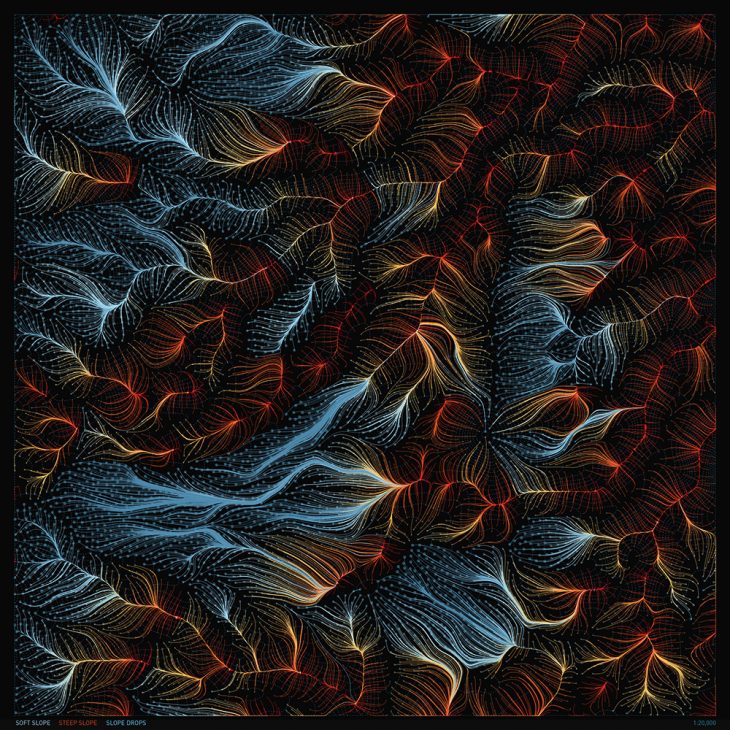
We studied the natural supply and flow of water across the site to understand the potential rates of absorption of rainwater. The flowlines shown above are graded according to the degrees of slopes of the natural topography.
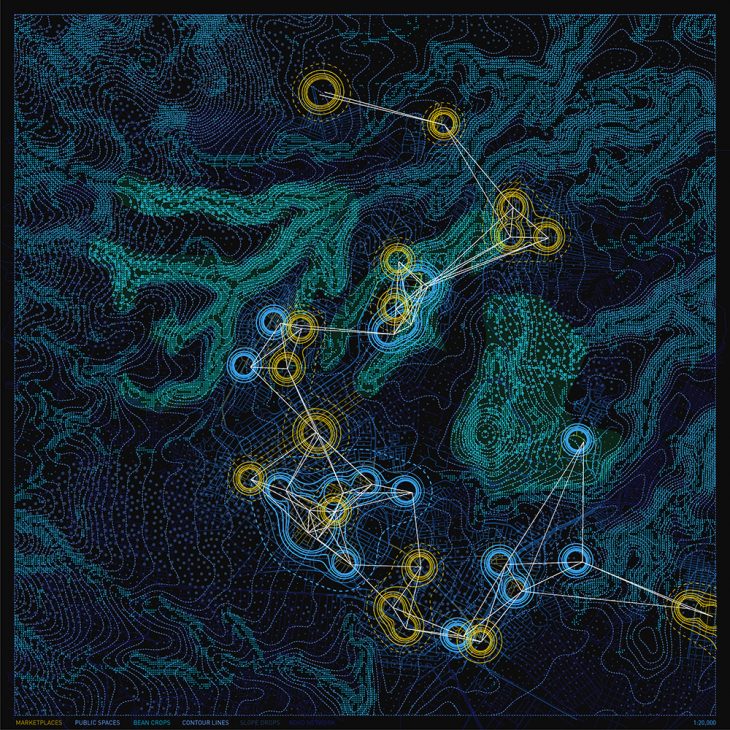
We mapped existing marketplaces and trading points to locate possibilities of connecting our intervention with the existing networks.
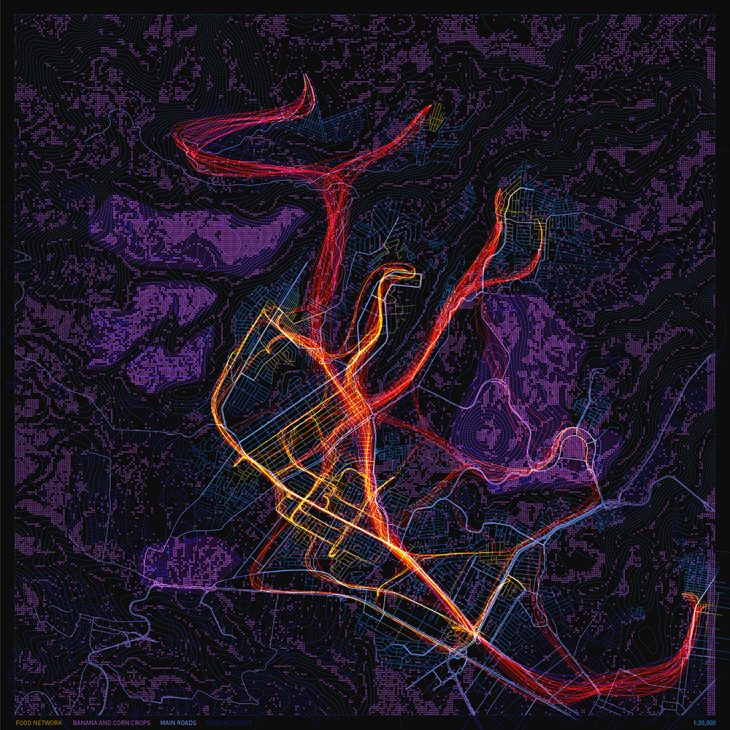
We generated a heat path of potential food distribution across the city linking the potential zones of agriculture for banana and corn crops.
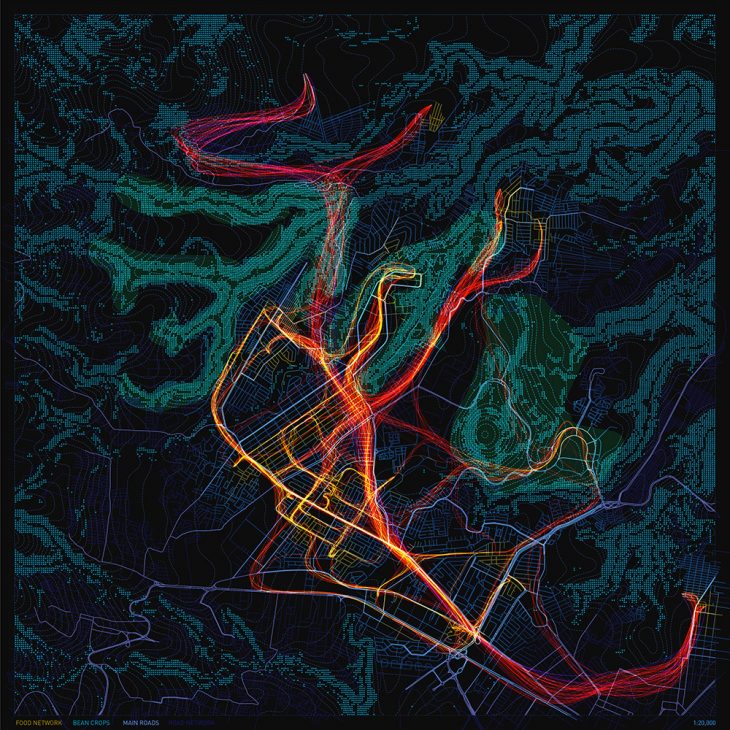
Similarly we generated a heat path of potential food distribution across the city linking the potential zones of agriculture for bean crops.
INTRODUCTORY STUDIO G2 – La Republica Alimentaria is a project of IaaC, Institute for Advanced Architecture of Catalonia developed at the Master in Advanced Architecture in 2019 by:
Students: Rani Kamel, Aditya Mandlik, Mario Sequiera
Faculty: Marco Poletto
Assistant: Marios Apostolos Mouzakopoulos
